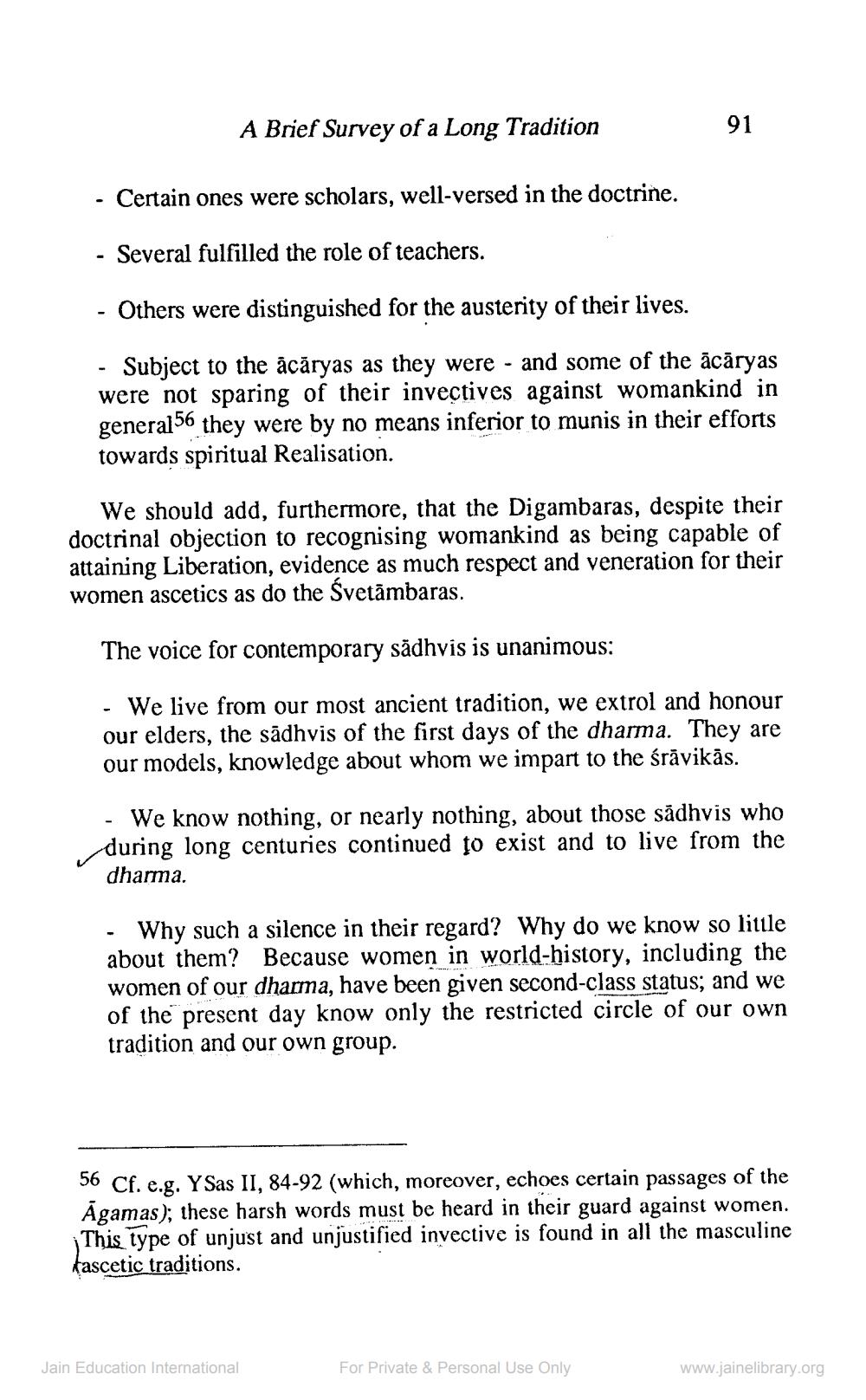________________
A Brief Survey of a Long Tradition
91
- Certain ones were scholars, well-versed in the doctrine.
- Several fulfilled the role of teachers.
- Others were distinguished for the austerity of their lives.
- Subject to the ācāryas as they were - and some of the ācāryas were not sparing of their invectives against womankind in general56 they were by no means inferior to munis in their efforts towards spiritual Realisation.
We should add, furthermore, that the Digambaras, despite their doctrinal objection to recognising womankind as being capable of attaining Liberation, evidence as much respect and veneration for their women ascetics as do the Svetāmbaras.
The voice for contemporary sādhvis is unanimous:
- We live from our most ancient tradition, we extrol and honour our elders, the sādhvis of the first days of the dharma. They are our models, knowledge about whom we impart to the śrāvikās.
- We know nothing, or nearly nothing, about those sădhvis who during long centuries continued to exist and to live from the dharma.
• Why such a silence in their regard? Why do we know so little about them? Because women in world-history, including the women of our dharma, have been given second-class status; and we of the present day know only the restricted circle of our own tradition and our own group.
56 Cf. e.g. YSas II, 84-92 (which, moreover, echoes certain passages of the Agamas); these harsh words must be heard in their guard against women.
This type of unjust and unjustified invective is found in all the masculine kascetic traditions.
Jain Education International
For Private & Personal Use Only
www.jainelibrary.org




